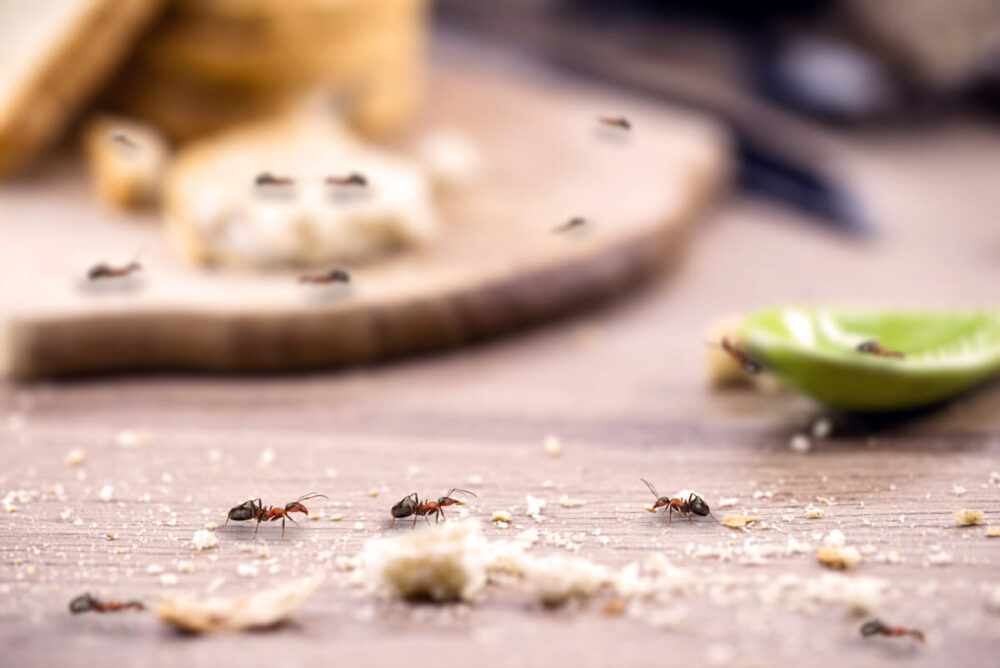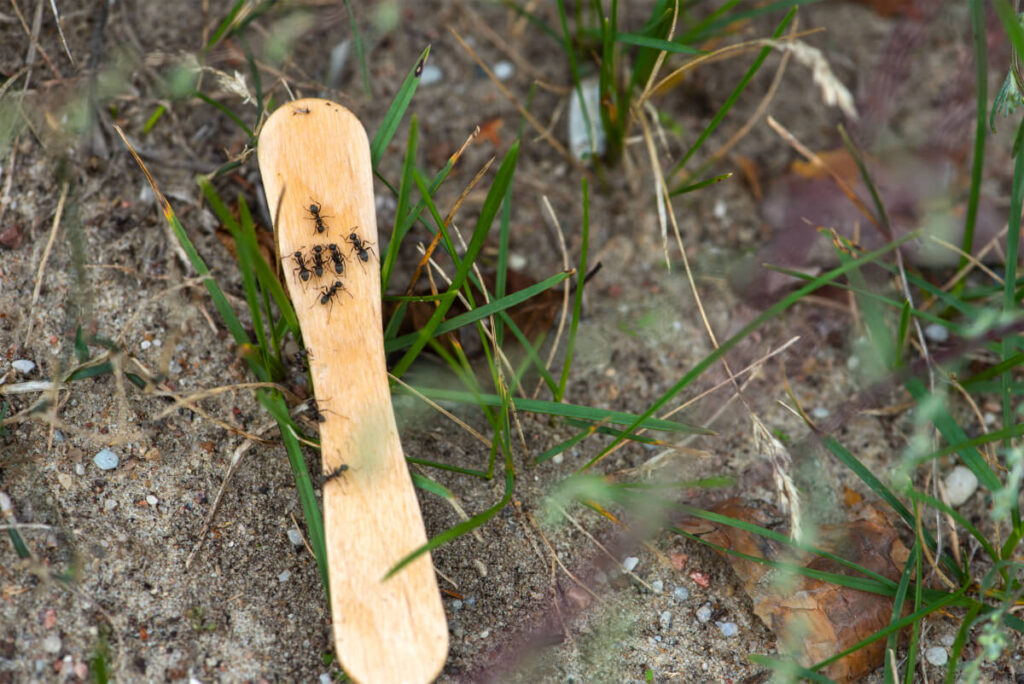


There are many different types of ant populations that can be found in your home. Take Argentine ants and odorous house ants for example. While they may all seem alike to you they have quite a few differences as well as similarities.
So what exactly makes Argentine ants and odorous house ants so different? While they do differ in many aspects, the easiest difference to spot between them is the smell they omit. Argentine ants release a musty odor while odorous house ants tend to smell like spoiled coconuts. Aside from scent, these ants can also differ in origins and habits, among others.
Read More: How Big Are Argentine Ants Nest?
The first thing people will notice about Argentine ants and odorous house ants is the scent they emit. While Argentine ants give off a stale musty scent, odorous house ants can smell like rotten and spoiled coconut. Aside from the smell they give off, there are several things that distinguish Argentine ants from odorous house ants, such as their origins, habits, and effects on humans and the ecosystem around them. Here are just some of the ways you can compare Argentine Ants and odorous house ants to each other:
While Argentine ants have grown to be pretty common pests in the United States, as their name suggests Argentine ants originated from Northern Argentina. They’re considered to be the most invasive ant species and can be quite aggressive towards their enemies.
Argentine ants only truly became a pest problem for the country in 1907 when the first case of an Argentine ant infestation was recorded in California. This led to the widespread distribution of Argentine ants across several parts of California, particularly the coastal and southern regions.
On the other hand, while Argentine ants technically are foreign pests that found their way to the United States, odorous house ants are actually a native ant species to Northern America and Mexico.
Odorous house ants have earned the title of an invasive ant species quite recently in 2009 after an incident in Hawaii was reported. Unlike Argentine ants that are characterized by their aggression at times, odorous house ants are known to be foraging ants more than anything else.
When looking at population growth in ants, a key player regardless of the type of ant is the Queen found in the ant colony. The Queen ant doesn’t hunt for food and rarely leaves the ant nest as its main job is to lay ant eggs and keep ant populations up within its colony.
Most ant nest sites have one queen ant that lays all the eggs for the entire colony, however, in some species, they actually have multiple queens laying eggs making their colony even bigger.
With both having multiple queens, Argentine ants and odorous house ants can keep their ant populations exponentially increasing throughout the year. In the case of Argentine ant colonies, they are made up of around 90% worker ants and 10% egg-laying queen ants.
As social insects, Argentine ants are also known to create supercolonies wherein one of their many queens will leave the parent nest and start a whole new but still interconnected ant nest nearby creating a network of ants in the process.
Odorous house ants, on the other hand, do have the potential to create supercolonies but it highly depends on their location. According to Grzegorz Buczkowski, odorous ants are more likely to congregate into smaller colonies in the forest but once they enter the city, they have the potential to grow their colony to have around 6 million worker ants and 50,000 queens.
As ants, both Argentine and odorous ants will seek out a place that has a wide variety of food sources available. However, they do slightly differ in where they will set up their nest nearby.
Argentine ants for example will settle in any location that can be easily accessed throughout your home. This includes damp soil in your garden, old and rotting wood structures, tree stumps, and potted plants. If caught too late after settlement, Argentine ants won’t only infest one of these locations but will mostly begin creating other colonies throughout the suggested places in your home.
While Argentine ants prefer easy access, odorous house ants’ main concern for setting up their nest is finding a water source. This is why you will find odorous house ants commonly nest in hot water pipes in wall voids, near water leaks, and water-damaged wood inside your home.
If found outside your home, they may prefer to settle into wet soil or firewood as well. Like Argentine ants, odorous ant infestations may be too difficult to remove entirely if they’re treated too late, as there is a good chance that they have already created sub colonies throughout your home.
All ant species have a pretty wide range in regards to their food preferences but there are some specifics of where Argentine ants and odorous house ants like to fester and feed on.
To ensure the survival of worker ants and the entire colony, Argentine ants can feed on anything from sugary drinks, pastries, pet food, raw meat, and other dead insects and animals. Like other ant colonies, worker ants will hunt for a food source and bring back pieces of food for the queen and the rest of the colony to eat.
With their relatively broad food preferences, if left alone to their own devices with a sufficient supply of food, Argentine worker ants can live for almost up to a year while their queens live for almost an entire decade.
Compared to Argentine ants, odorous house ants prefer an all-around sweeter food supply. They’re known to be attracted to the secretions of honeydew-producing insects as well as anything with a high sugar level. This could include cake, chocolates, soda, etc. It’s also important to note that while they prefer sweeter food options, odorous house ants can also eat other dead insects like the Argentine ants if necessary.
When it comes to the effects these two ant species can have on human health, Argentine ants are far more likely to cause harm than odorous house ants.
The first difference between these ants is the fact that Argentine ants do bite people which can cause some allergic reactions from the chemical compounds transmitted from them. This is not to say that every person bitten by Argentine ants will experience an adverse allergic reaction but compared to odorous house ants that simply don’t bite humans, they’re more dangerous in this aspect.
Another thing that makes Argentine ants more hazardous to human health is their ability to carry diseases and pathogens into your home. With their habitat choices, they seem to be more exposed to viruses or bacteria and can travel around your home quite quickly due to the sheer numbers of their colony.
While odorous house ants also multiply at an alarming rate, they have not been shown to carry viruses or bacteria in the way Argentine ants and other dangerous pests do around your home. For this reason, it’s possible to say that odorous house ants have a less harmful effect on human health.
Both Argentine ants and odorous house ants have the ability to affect the ecosystem around them. For the most part, they both have a mutualism relationship with honeydew-producing insects, as they can both feed on honeydew. To ensure their food source coming from these insects, both ants will protect aphids and other honeydew-producing insects from possible predators and threats.
While they both seem to affect the ecosystem, Argentine ants have been said to cause more harm to the ecosystem due to their more aggressive and invasive nature. Because of competition, Argentine ants can disrupt the natural food chain wherein other ants and pollinators can’t get access to the food they need. Argentine ants either exploit the resources for their colony or displace other insects through the interference of a food source.
Learn More: How To Prevent Argentine Ants From Entering Your Home

While there are quite a few similarities and differences between Argentine ants and odorous house ants, it’s important to note that they can actually have a predator-prey relationship with each other.
The invasive and aggressive nature of Argentine ants make them likely to displace other insects, which often include odorous house ants. With similar food sources and reliance on honeydew-producing insects, odorous house ants will be often displaced by Argentine ants in the hope of gaining access to territory with viable food supplies.
Though they have their differences, it’s good to know that treating either type of ant infestation in your home can be done with similar practices. The most effective way to treat an active infestation of Argentine ants and odorous house ants would be to use ant bait or toxic baits, as these kill ants from inside the colony. How ant bait works is that the ants will mistakenly take the bait as food and bring it back to the colony for everyone to eat.
Bait is laced with toxins that will kill off all the ants in just a matter of time. With each ant ingesting the toxins, the entire colony is eliminated by the ant baits to ultimately prevent them from re-populating within your home. This is particularly great for Argentine ants and odorous house ants, as their rapid growth often leads to re-population when a weaker treatment or ant repellent is used instead.

No matter what type of ant it is, insect infestations are never welcomed in a home. With Argentine ants and odorous house ants, these infestations can be 10x worse due to their rapid population growth and new colonies. To treat these types of ants, you need to exterminate them all; otherwise, they’ll simply repopulate and cause future infestations.
At PermaKill Exterminating, we guarantee safe and effective ant management to keep those pesky insects and pests at bay. Using effective materials and chemicals with years of exterminating under our belt, there’s no type of infestation that we can’t handle. Rid your home of pests today and contact us for an inspection today.
Read More: How to Stop Argentine Ants From Invading Your Home